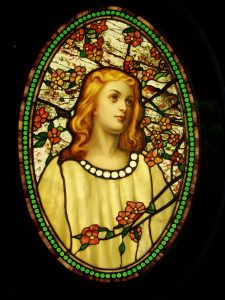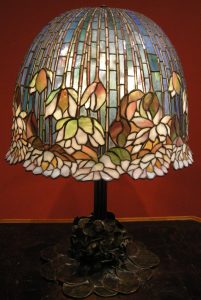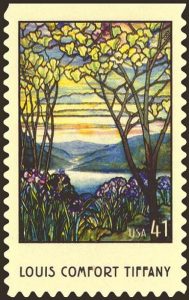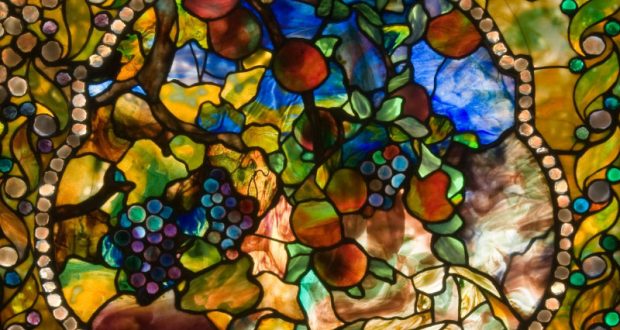During the year 1837, a certain young man set out to try his hand at retailing in a burgeoning New York City. He had been the manager of a general store for nearly ten years and figured that it was time to venture out. Together with a childhood friend, his initial plan was to open a small stationary store which would be made to include a gift shop. Where the nine hundred dollars that he had borrowed from his father was a very large sum in those days, he was warned by all not to take the chance. But as it turned out, he quickly demonstrated more than one edge on his competition. Edges like his common sense approach to business and his rare sense for quality. For it is the name Charles Lewis Tiffany (1812-1902) that will forever be associated with diamonds, gems, sterling, crystal and china, as well as, platinum, gold, and silver “fancy goods” of all kinds.
 Charles Tiffany was the first New York retailer to adhere to a firm price for his goods, thereby making it clear that he was not open to bartering. By the middle of the 19th century his company had become recognized for its expertise, especially in the world of jewelry. By this time Tiffany’s was designing and producing much of the jewelry that it sold and was employing many artisans. Tiffany and his company became renowned in social circles and by 1850 was able to open a second store in Paris. In 1868 they opened a third store in London thereby distinguishing the chain as a American based multi-national company. As a further testament to his marketing abilities, Charles Tiffany is also credited with producing the first retail catalog in the United States. In 2018 the company that he started reported well over four billion dollars in worldwide sales.
Charles Tiffany was the first New York retailer to adhere to a firm price for his goods, thereby making it clear that he was not open to bartering. By the middle of the 19th century his company had become recognized for its expertise, especially in the world of jewelry. By this time Tiffany’s was designing and producing much of the jewelry that it sold and was employing many artisans. Tiffany and his company became renowned in social circles and by 1850 was able to open a second store in Paris. In 1868 they opened a third store in London thereby distinguishing the chain as a American based multi-national company. As a further testament to his marketing abilities, Charles Tiffany is also credited with producing the first retail catalog in the United States. In 2018 the company that he started reported well over four billion dollars in worldwide sales.
While Charles Tiffany was busy building his business he was also busy building a family. After marrying his partner’s sister, Harriet Young, in 1839, they proceeded together to have six children. The second of their offspring, Louis Comfort Tiffany (1848-1933), was also destined to distinguish the family name, and would become a great American artist. 
Having begun his career as a painter, Louis Tiffany also dabbled in many of the decorative arts. While still in his early twenties he became interested in working with glass. Driven, he began working at several different glass factories in New York in an effort to gain a complete understanding. Then in I879 Tiffany joined forces with other talented artists to form what would become a very prestigious artistic association know as, “The Associated Artists”. For his part, Tiffany designed stained glass windows & lamps, metal & glass jewelry, blown glass and mosaics. Louis Tiffany’s inspiration, and his father’s clientele, helped to propel his firm to success. His most notable contribution from this time period was the remolding of the White House interior in 1882 during the administration of President Chester Arthur.
After his rigorous involvement with Associated Artists, Louis Tiffany decided to form a new company which would concentrate specifically on art glass. Tiffany Studios, as it would later be known, not only designed and fabricated works of art, but they made their own glass as well. Unhappy for years with what was available, he was now able to govern the thickness, texture, colors, opalescence and mineral impurities which added character to the glass. He also experimented with blown glass, and in 1894 trademarked the term Favrile, (which was taken from a French word meaning handmade), and that term would later be applied to describe his enamel, glass, and pottery work.

In America, Louis Comfort Tiffany is the name most associated with The Art Nouveau movement. His flowing designs and use of the best materials were in fact a “new” aesthetic. At one point, the Tiffany Studios employed more than three hundred artisans. Many of these artists were woman who are now co-credited with many of the floral designs used for the lamps. In 1900 Louis Tiffany won a personal gold medal at the World’s Fair in Paris with his set of stained glass panels titled, “The Four Seasons”. (pictured) Shortly after that, completing the circle, he went on to become the first director of design for Tiffany & Company; the company that was founded by his father.




